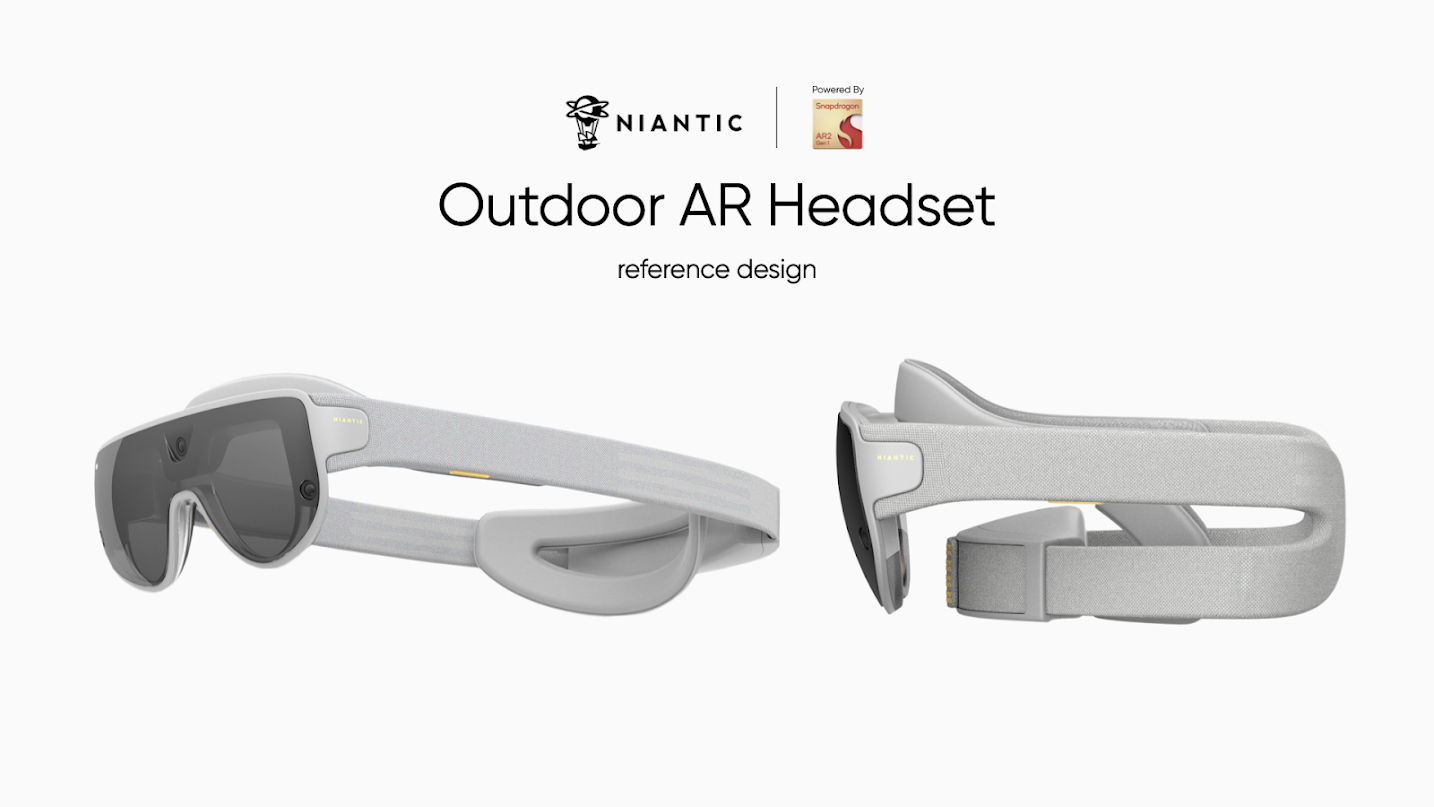
At the 2022 Snapdragon Summit, Niantic took the stage today to show off the “latest iteration” of its outdoor AR headset reference design. The company, which was spun out of Google in 2015 as part of Alphabet reorganization, is most known for Pokémon Go.
The design is “not final” with a relatively slim see-through display, while other computer hardware looks to be housed in a rear piece at the back of your head. The two pieces are connected with a fabric-like band.
Niantic’s first prototype (seen below) was powered by the Snapdragon XR2 Gen 1 that’s tethered via wires to a phone and battery. “Optimized for [Niantic’s] outdoor use case,” there are two very apparent cameras at the stems.
The hardware reference design showcases the potential for outdoor-capable AR headsets that can orient themselves using the Niantic map and render information and virtual worlds on top of the physical world.
Niantic
First (XR2) prototype
On Niantic’s Snapdragon AR2 Gen 1-powered reference design, the cameras are much more hidden, mainly at the bridge of the headset, but there are also lenses on each side. Niantic says it identified five critical requirements from user feedback, starting with being comfortable. The company is targeting “long play sessions” that are described as lasting one to two hours with a weight under 250 grams.
Offering a wireless design was needed so wires “[don’t] get in the way of active play.” Other requirements were portable, compact, and powerful, with Niantic saying it wants to “really augment the world.”
Qualcomm described the Snapdragon AR2 Gen 1 as its first purpose-built AR chip after previous generations focused on offering a chip that supported both augmented and virtual reality use cases. It features a “multi-chip distributed processing architecture” consisting of an AR processor, AR co-processor, and connectivity (to a phone or PC “host” device) that are not on one board, but rather located across the two side stems and even the bridge of the glasses.
Niantic shared “real footage through the lens of [its] prototype devices that demonstrates the experiences that are already in development today.” People are using a handheld controller to point and select the augmented/virtual content.
There are several gaming use cases, but notable is guided navigation (like Google Maps Live View) and one demo that overlays business information (coffee shop) over a real-life map.
Besides Niantic, Qualcomm said Lenovo, LG, Nreal, OPPO, Pico, QONOQ, Rokid, Sharp, TCL, Tencent, Vuzix, and Xiaomi are in “various stages of development” with AR2 Gen 1.
Meanwhile, Microsoft has been collaborating with Qualcomm on the AR2 Gen 1 for a while, with Redmond positioning its cloud (Azure) as helping power AR experiences.
Updating…
FTC: We use income earning auto affiliate links. More.
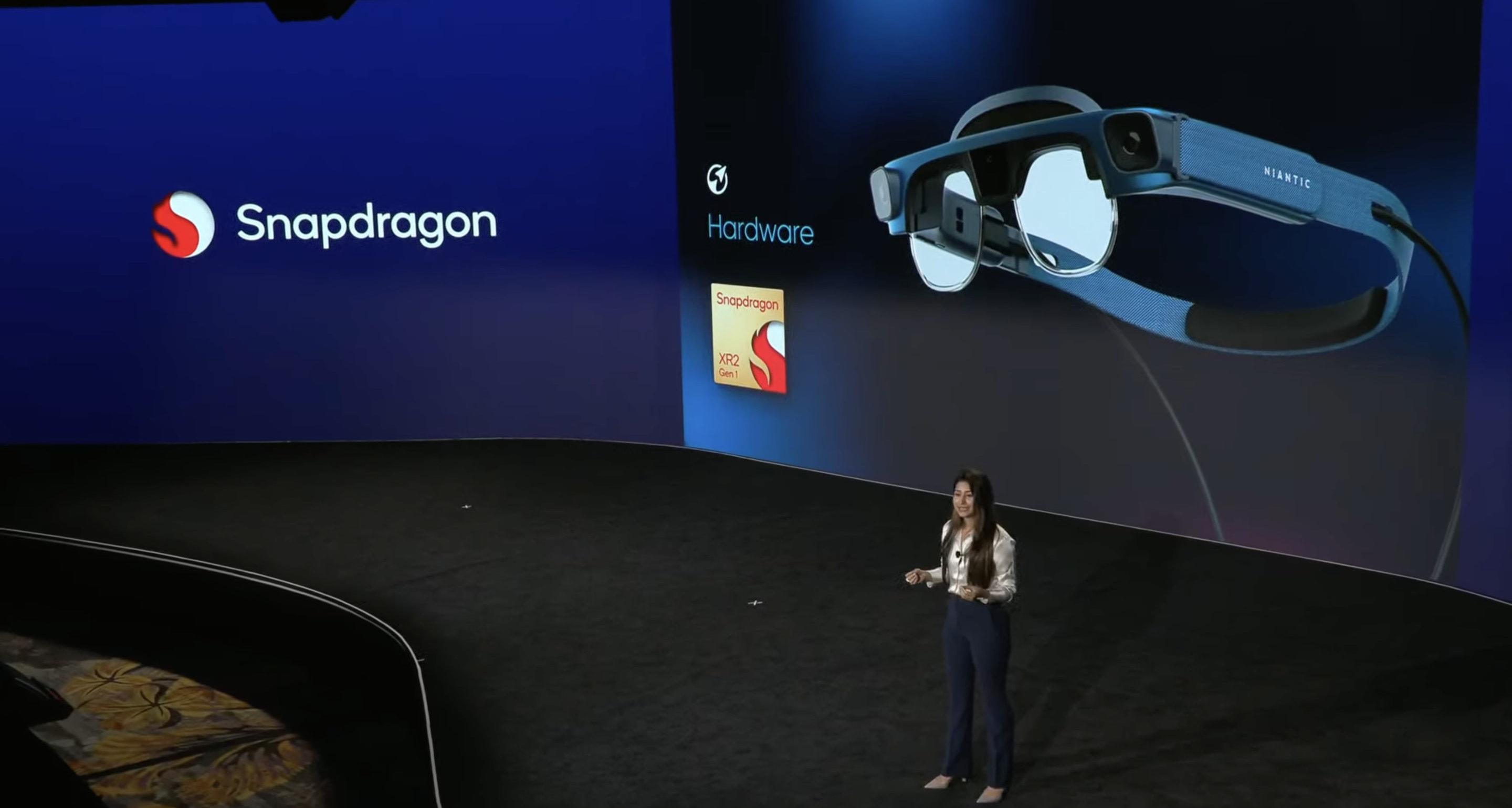






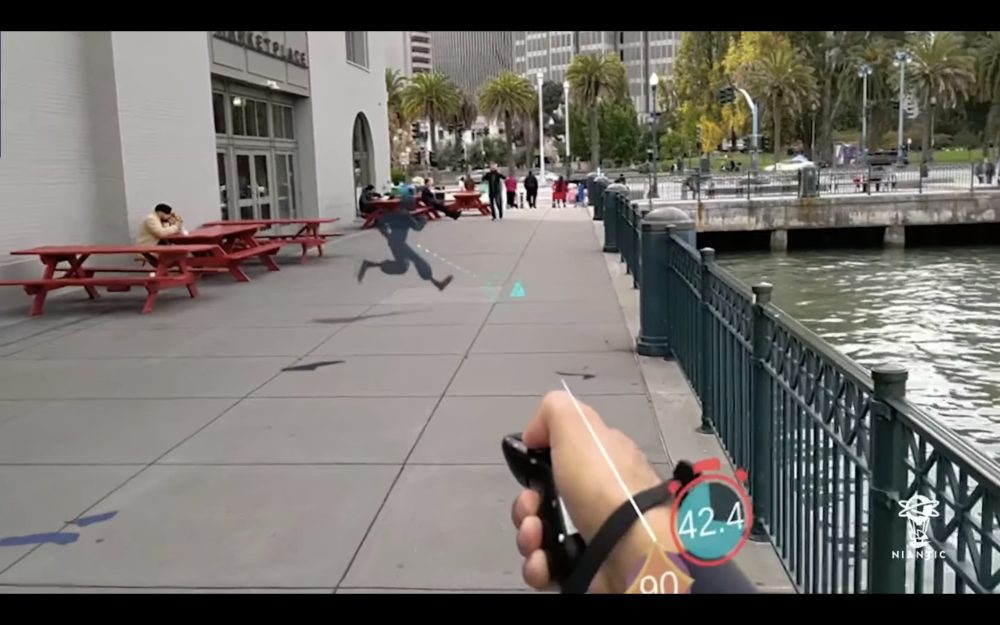

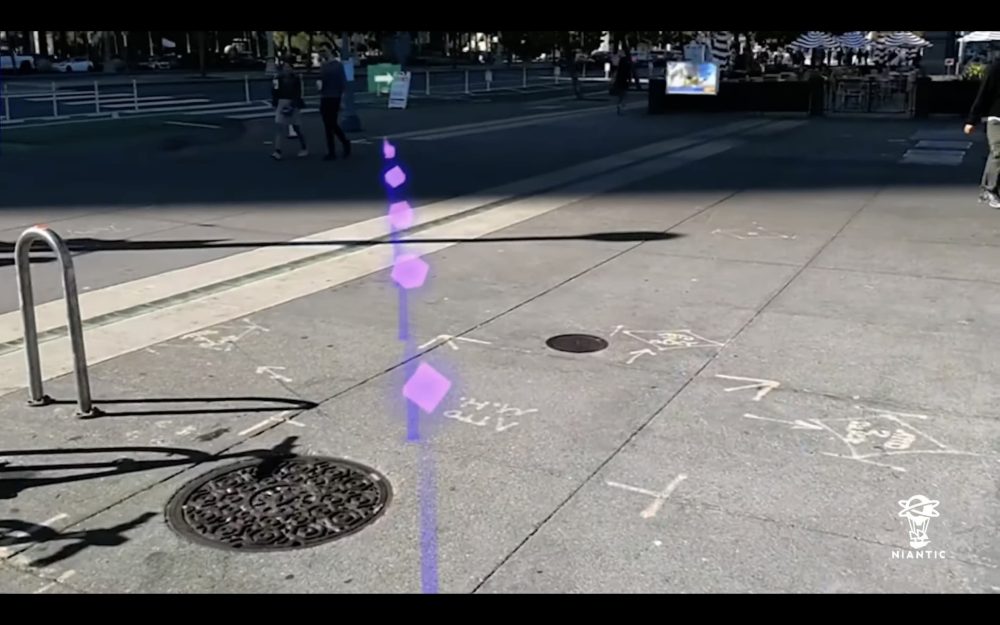
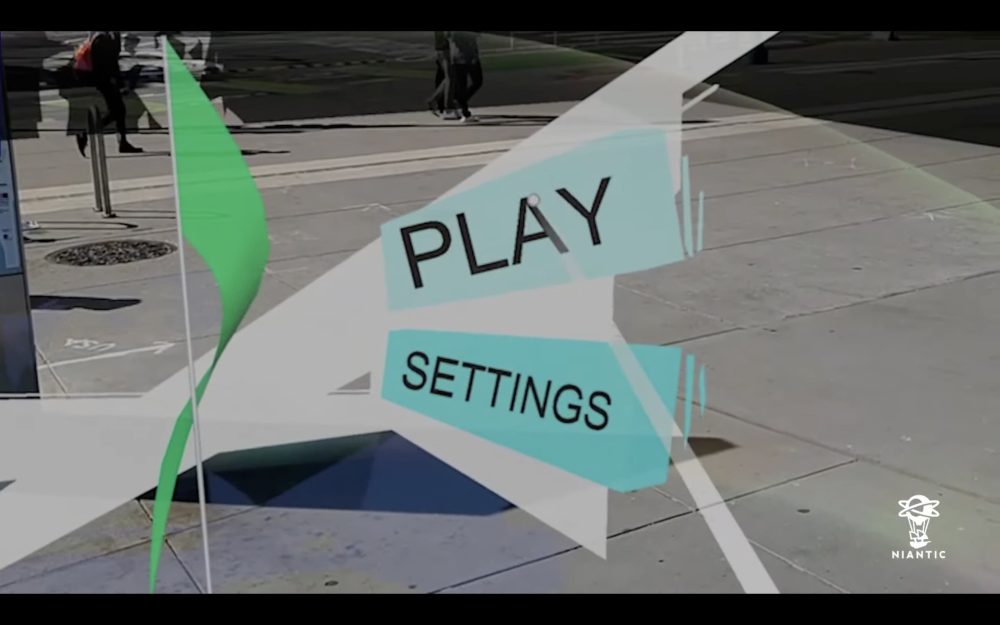


Comments